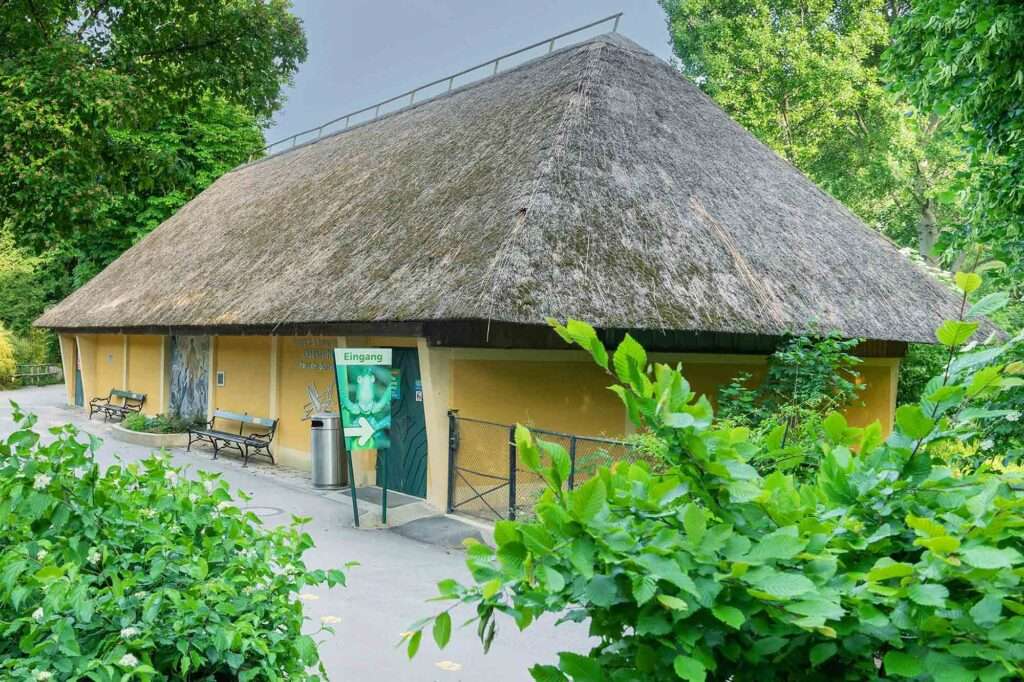A stash of rare chameleons trafficked into Austria has inspired a new enclosure for all smuggled reptiles in the country’s Schoenbrunn Zoo.
Keepers say they are rebuilding an enclosure to make it a haven for the trafficked creatures which arrive in the country hidden in airplane luggage.
Even the enclosure entrance has been designed to look like an airport lounge.
The move comes after 74 rare chameleons were found new homes at the zoo when they were found inside luggage at Vienna International Airport two years ago.
Schoenbrunn Zoo director Stephan Hering-Hagenbeck said in a statement obtained by Newsflash: “In the future, we want to show crticially endangered reptiles and amphibians that were confiscated by customs and handed over to us, such as chameleons, turtles, and frogs.
“This is intended to bring the problem of animal smuggling into focus.
“We would also like to provide an insight into our daily work behind the scenes and show the effort that goes into maintaining and breeding healthy populations sustainably outside of their natural habitat.”
The 2021 reptile haul included some extremely rare species like the giant monkey-tailed east Usambara two-horned chameleon (Kinyongia matschiei), the Usambara two-horned

chameleon (Kinyongia vosseleri), the Nguru pygmy chameleon (Rhampholeon acuminatus) and the sharp-nosed chameleon (Kinyongia oxyrhina).
The original chameleons have since produced hundreds of offspring, says the zoo.
Now Hering-Hagenbeck said they will be joined by another confiscated 89 geckos, snakes, and scorpions that have been placed at the zoo as of May this year.
Zookeeper Anton Weissenbacher said: “We are required to act very quickly. We get a call and have to immediately provide the entire infrastructure with suitable terrariums and a trained team of zookeepers.
“First, the animals have to be secured from various containers in which they are smuggled, such as ice cream boxes and chocolate wrappers.

“They are then given medical care and nurtured.”
Zoo officials will use the new arrivals to work on a breeding programme for some of the most endangered reptiles in the world.
Weissenbacher said: “We have already been able to successfully breed 85 percent of all the species we have included.
“These include many species threatened with extinction, such as the Nguru pygmy chameleon.
“This is a major contribution to species protection because we are building long-term healthy populations outside of the natural habitat and collecting important knowledge.”

To find out more about the author, editor or agency that supplied this story – please click below.
Story By: Georgina Jadikovska, Sub-Editor: Michael Leidig, Agency: Newsflash
The Ananova page is created by and dedicated to professional, independent freelance journalists. It is a place for us to showcase our work. When our news is sold to our media partners, we will include the link here.




